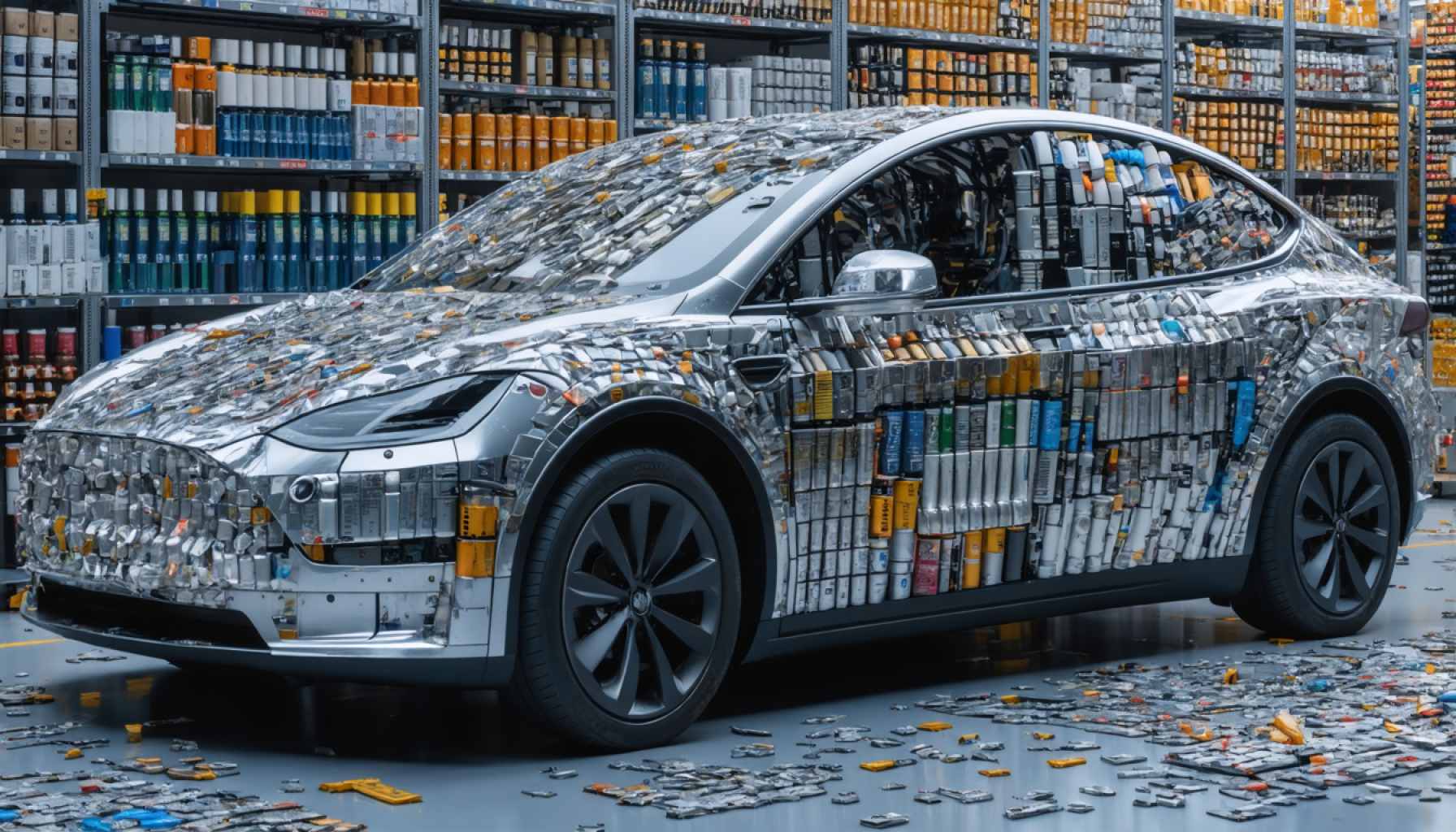- The EV battery recycling market is set to grow at a 37.40% CAGR from 2022 to 2034, expanding from USD 1.8 billion in 2024 to USD 31.42 billion by 2034.
- Sustainable management of decommissioned EV batteries is crucial as the world shifts towards cleaner energy solutions.
- Recycling involves advanced processes like pyrometallurgical and hydrometallurgical methods to extract valuable elements.
- Geographical diversity sees regions like North America, Europe, and Asia-Pacific advancing in EV battery recycling, with varying challenges and prospects.
- Key industry players, such as American Manganese Inc. and Li-Cycle Corp, are leading innovation and shaping future recycling policies and practices.
- Recycling EV batteries conserves resources, mitigates environmental risks, and transforms waste into economic opportunities.
- A holistic approach, emphasizing the reuse and recycling of battery materials, is vital for achieving a sustainable future.
The landscape of electric vehicle (EV) battery recycling is evolving with a momentum that rivals the electric cars themselves. With a projected growth rate of an astounding 37.40% CAGR from 2022 to 2034, this burgeoning market is on track to skyrocket from USD 1.8 billion in 2024 to a staggering USD 31.42 billion by 2034. This explosive growth underscores a vivid reality: as the world transitions to cleaner energy, the sustainable management of battery waste becomes paramount.
In a world tirelessly pushing for green, the remnants of progress clutter our vision—a looming hill of decommissioned EV batteries. The call for innovation rings louder, inviting both pioneers and stakeholders to transform waste into opportunity. Powering this transformation is not merely the act of recycling but a mission, as vital as the batteries’ initial promise of reducing carbon footprints.
Imagine an intricate dance between chemistry and technology, where tiresome lithium-ion packs, like seasoned travelers, either find new life or donate their elements for the journey of others. The recycling process is divided and conquered through techniques like pyrometallurgical and hydrometallurgical methods, akin to the alchemists of old manipulating the elements to extract precious value.
Geographically, the terrain of EV battery recycling is as diverse as the languages spoken—markets in North America, bustling Europe, and the dynamic Asia-Pacific are all marking formidable strides. Each region offers its tapestry of opportunity, woven with unique challenges and prospects. As the European Union tightens its regulatory grip and countries like China innovate under the world’s watchful eyes, collaborations become the chave to unlocking the industry’s full potential.
Key players are emerging: from giants like American Manganese Inc. to nimble innovators like Li-Cycle Corp, each contributing their unique expertise to the fabric of this market. These industry leaders, driven by necessity and innovation, sketch the blueprint for future policies and practices, much like cartographers of an undiscovered land.
Yet, beyond numbers and forecasts, lies the essence of why this matters. Recycling EV batteries is not a mere venture of profitability; it is an assurance to the future. By reclaiming the precious metals from spent batteries, these efforts not only conserve valuable resources but also mitigate environmental hazards associated with battery waste. It turns an environmental challenge into an economic and ecological opportunity.
The drive for a sustainable tomorrow demands more than just cleaner energy. It requires a holistic approach, integrating the end of battery life into the virtuous circle of use, reuse, and recycle. As technology and strategy harmonize to address critical challenges, the promise of a sustainable future no longer seems a distant hope but an achievable destiny.
With the global community leaning heavily on EVs for a greener future, tapping into the potential of EV battery recycling is not simply beneficial—it’s essential.
The Next Big Thing: Unlocking the Future of EV Battery Recycling
Introduction
The electric vehicle (EV) battery recycling industry is gearing up for a revolution, with projections indicating a stunning growth rate of 37.40% CAGR from 2022 to 2034. This growth will propel the market from USD 1.8 billion in 2024 to over USD 31.42 billion by 2034. As the globe shifts towards sustainable energy solutions, the proper management of battery waste is becoming a cornerstone of this transformation. Let’s delve deeper into the complexities of this evolving industry, highlighting facts, trends, and insightful tips for stakeholders.
How-To Steps & Life Hacks for EV Battery Recycling
1. Collection & Sorting:
– Identify: Separate batteries based on chemistry and condition.
– Transport Safely: Use certified containers to prevent short-circuiting during transport.
2. Dismantling:
– Mechanical Tools: Use automated systems to safely disassemble battery packs.
– Manual Intervention: Deploy skilled workers for manual checks, ensuring no damaged cells proceed further.
3. Recycling Methods:
– Pyrometallurgical Process: Involve smelting to retrieve metals like nickel, cobalt, and copper.
– Hydrometallurgical Process: Utilize solvents to extract lithium, manganese, and other elements.
4. Refurbishment:
– Testing: Check the integrity of cells for potential reuse in second-life applications, like energy storage systems.
– Certification: Ensure the refurbished battery meets safety and performance standards before resale.
Real-World Use Cases
– Renewable Energy Storage: Second-life EV batteries can be integrated into solar farms, enhancing energy storage capacity and reliability.
– Smart Grids: Incorporate reclaimed materials into creating smarter, more responsive electrical grids.
Market Forecasts & Industry Trends
The EV battery recycling market is projected to thrive, driven by rising environmental regulations and technological advancements. The European Union, for instance, is tightening its legal framework to promote sustainable recycling practices. Moreover, countries like China are innovating rapidly, setting benchmarks for global practices.
Reviews & Comparisons
– American Manganese Inc.: Known for its proprietary hydrometallurgical process, offering high recovery rates of lithium.
– Li-Cycle Corp: Pioneering in a closed-loop resource recovery, focusing on maximizing battery material reuse.
Controversies & Limitations
– Technical Challenges: Dealing with complex chemistries of newer battery technologies.
– Capacity Constraints: Existing recycling infrastructures might struggle to scale alongside the growing volume of decommissioned EV batteries.
Features, Specs & Pricing
Investing in the latest recycling technology can be costly, but yields long-term environmental and financial returns.
– Automated Dismantling Systems: Prices vary but investing can enhance process efficiency.
– Safety Protocols: Essential to reduce risks associated with highly reactive battery elements.
Security & Sustainability
Recycling can significantly lower the need for raw material extraction, reducing the carbon footprint and conserving natural resources. By minimizing the environmental hazards posed by disposed batteries, the industry aligns with global sustainability goals.
Insights & Predictions
– Increased Collaboration: Governments and corporations are likely to form more partnerships to streamline recycling processes.
– Technological Innovations: Expect breakthroughs in extracting higher purity elements from batteries, further enhancing profitability and sustainability.
Tutorials & Compatibility
– Cross-Platform Adaptation: Develop compatibility frameworks for diverse battery chemistries, enhancing recycling processes across different markets.
Pros & Cons Overview
Pros:
– Mitigates environmental impact and conserves resources.
– Creates economic opportunities through material recovery.
Cons:
– High initial investment in technology and infrastructure.
– Requires skilled workforce and continuous innovation.
Actionable Recommendations & Quick Tips
– Embrace Innovation: Invest in scalable and adaptable recycling technologies.
– Boost Collaboration: Engage with regulatory bodies to align with existing and forthcoming recycling legislation.
– Reduce, Reuse, Recycle: Implement comprehensive programs to fully integrate the battery lifecycle into your business model.
Related Links
For more information on energy solutions and sustainable technology, visit link name.









